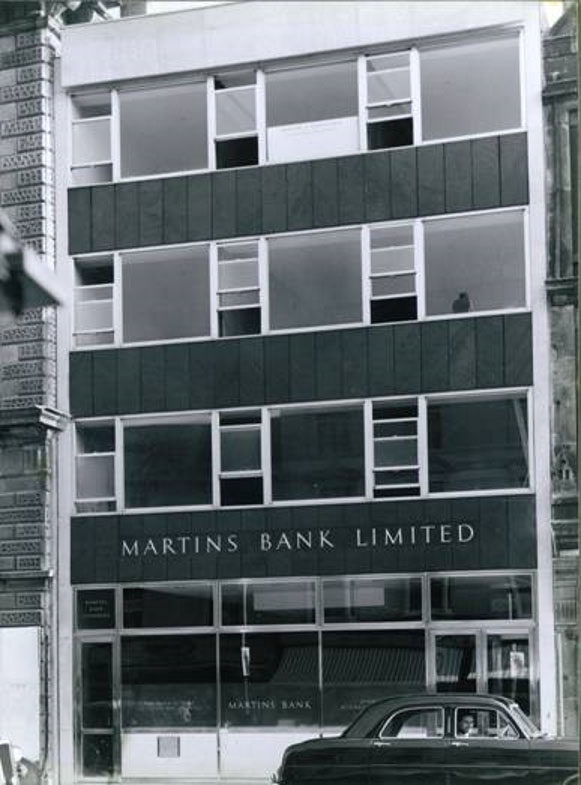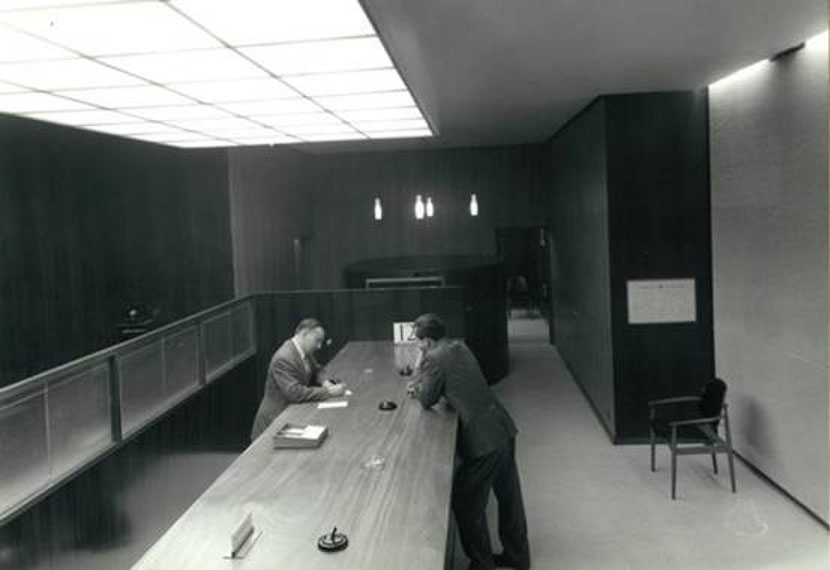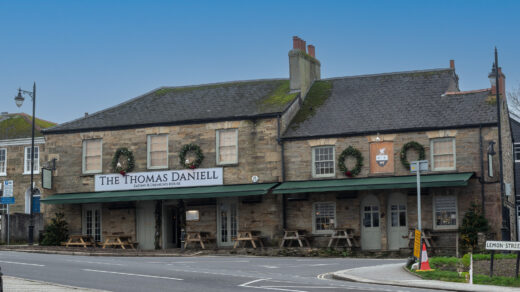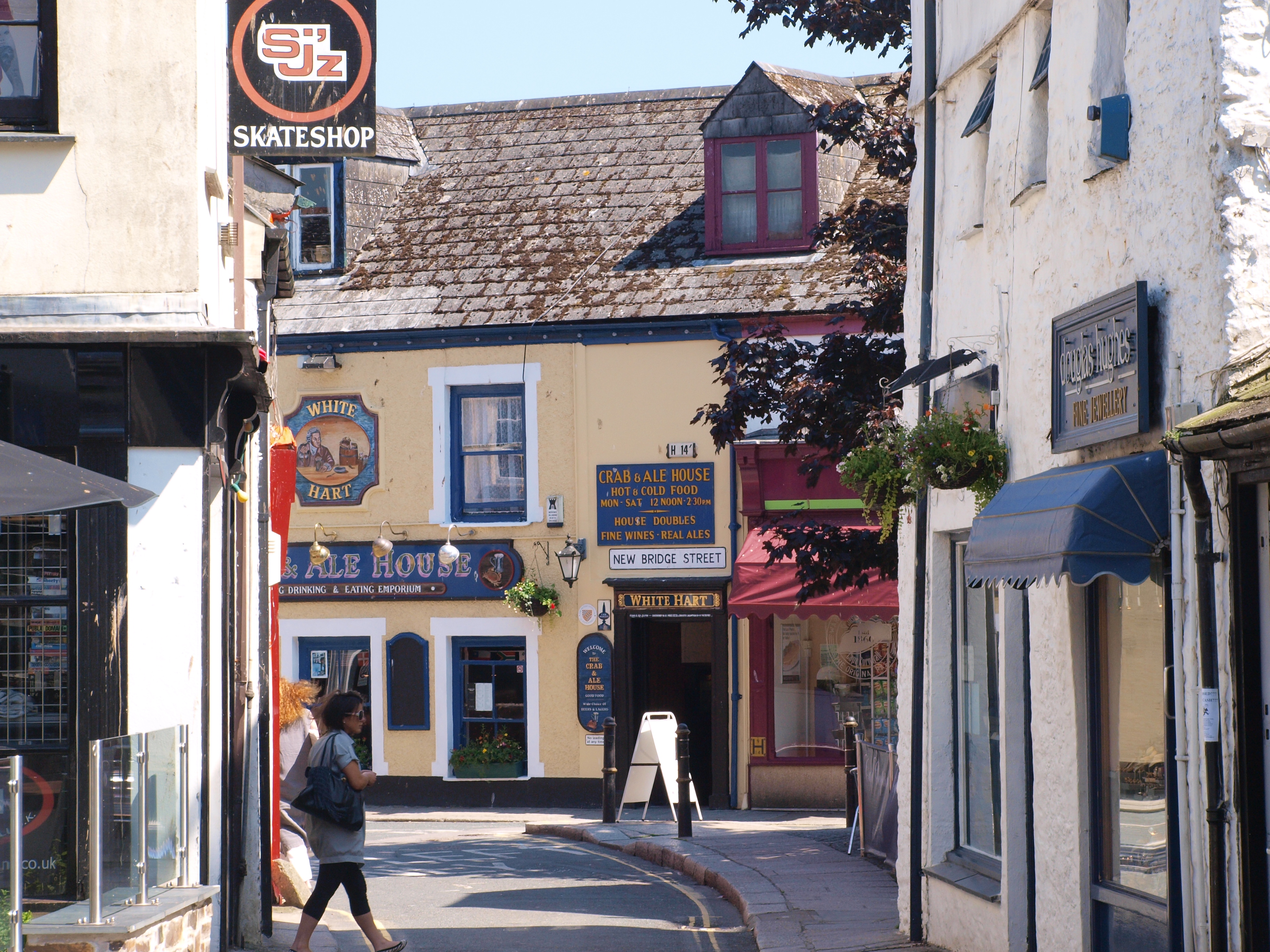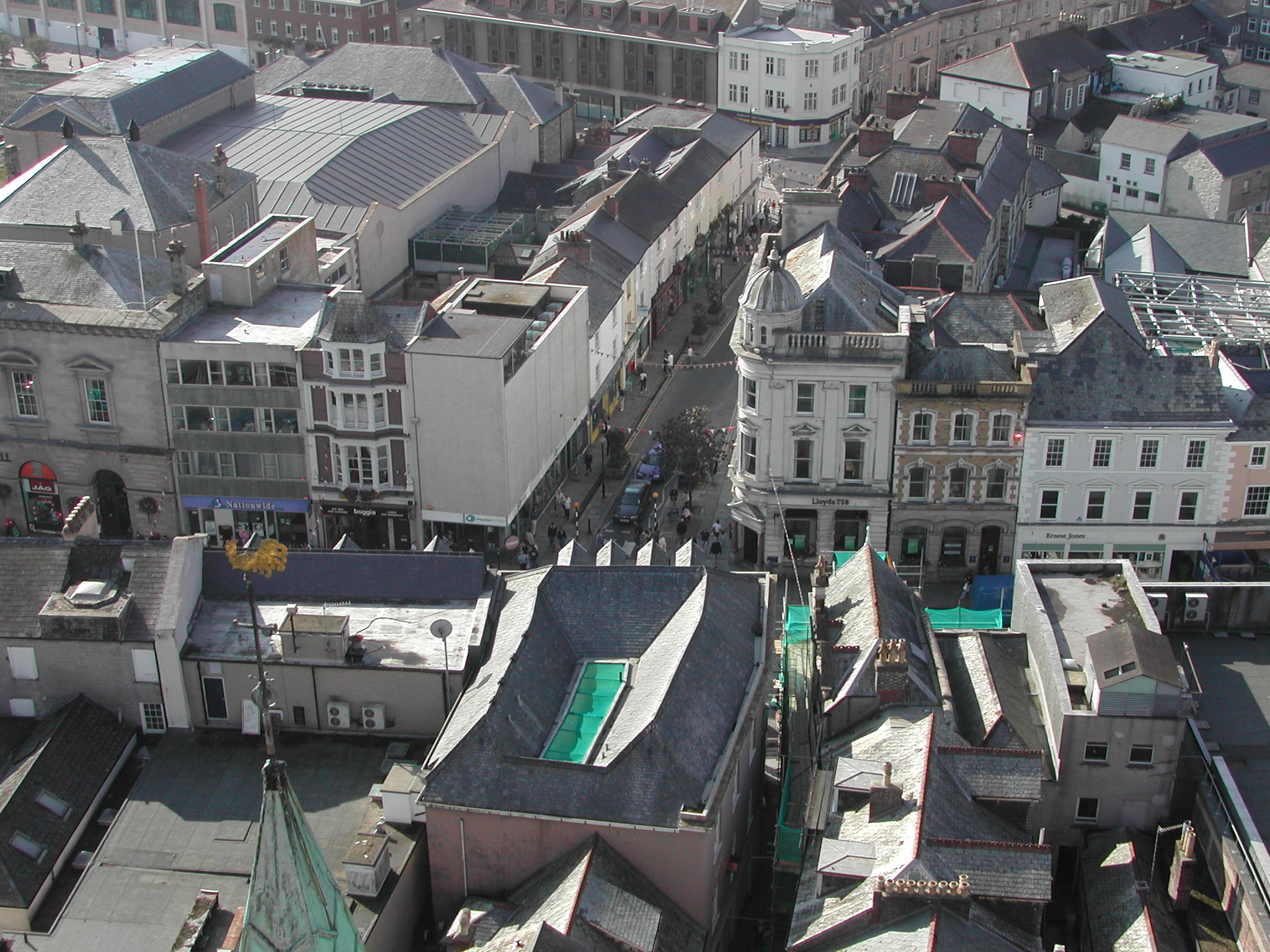Time travel back to 1959
Some of you might remember 1959. When there was no social media. When the word “celebrity” was unknown. When we got our news from magazines, newspapers and the radio. When Cornwall really was cut off and when banks were banks and had managers to boot. Taken from the The Architect and Building News of that year, this gives us a glimpse into the history of one of Truro’s least regarded buildings.
Our first branch in Cornwall
The visitor to Cornwall is quickly conscious after leaving Plymouth of entering another world. There is a peacefulness about this countryside which has a different quality from the peaceful-ness which is always associated with the country.
The tempo of life is slower, the people seem more contented, the rash of ribbon building has not defiled the roads, things seem largely as they were. There is little to offend the eye, life seems more gracious and the charm is enhanced by the knowledge that the sea is nowhere very far away, and Nature has provided with almost prodigal liberality numerous sandy beaches and picturesque coves. Time no longer seems so important; in fact, in some ways time has stood still, yet here more than anywhere else in England one is very conscious of the rolling on of Time. The men who are asked to leave their native heaths in order to establish branches of the Bank in places where the name of the Bank has hitherto been almost unknown are to be envied rather than pitied.
It is an enrichment of life and experience to move from the familiar to the unfamiliar and when the call comes to go to an outpost like Truro the recipient is doubly fortunate. Anyway, remote though it is, the branch has already been visited by the Chief General Manager, the Chairman of the South Western Board and the South Western District General Manager, so the feeling of isolation is not as acute as in some more accessible places.
The branch was opened early in 1959 and quickly attracted attention to itself. The architect, Mr. John Crowther, whom we had the great pleasure of meeting, scored a notable success with his design for the new building in that it was awarded a Class I award by the Civic Trust for a new building in the County of Cornwall and was prominently featured in the Architect and Building News. It is quite an additional feather in his cap that he has been given the job of designing the interior of Kendal branch which is being reconstructed. Incidentally, although the various banks are all well placed and are within sight of each other, there can be little doubt about ours having the best place, right beside the City Hall. The modern facade, of glass and Cornish stone, blends quite remarkably with the older buildings in the street.
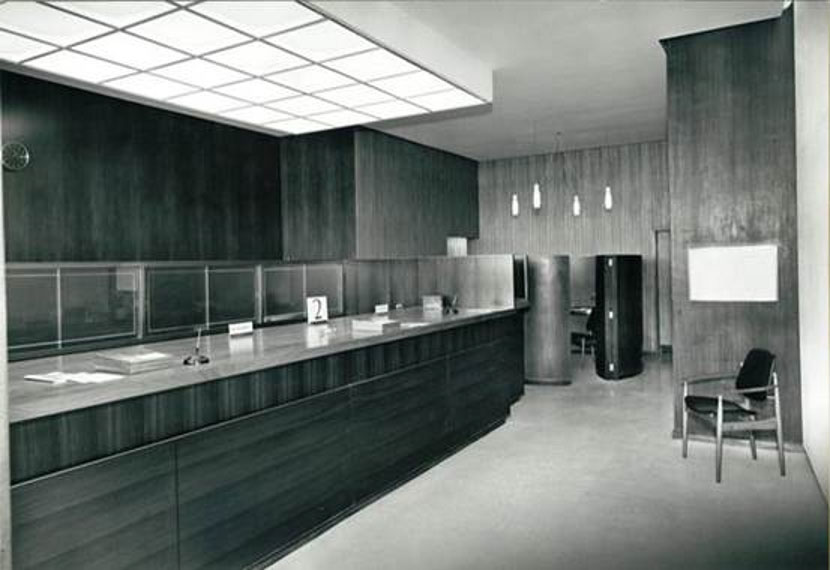
So far as the interior is concerned, readers are getting used to the lyrical praise we bestow on our new branches and we are always conscious of the grim smiles which our remarks evoke on the countenances of our colleagues in the Manchester and North Eastern Districts especially, where the modernisation programme can only operate a bit at a time.
Nevertheless, this branch is as good as anything we have done—tasteful, welcoming, dignified and altogether a place of which both we and our customers are proud. The heating is under-floor and the lighting is recessed in the ceiling, while an unusual feature is the waiting room of elliptical design. The richness of the dark veneer of Palisander and Zebrano used on the walls is most satisfying, especially in the Manager’s room where the illumination which filters in through the excellent lay light sets the graining off to advantage. A stroke of genius here which causes a picture of the room to stay fixed in the memory, is a curtain, a veritable Jacob’s coat of many colours, which screens the glass panelling to one side of the Manager’s desk.

We are having a colour photograph taken of this room for use in a subsequent issue. The final imaginative touch in this room is the use of Danish furniture of the most modern design. On the customer’s side of the counter a further clever touch which offsets the beauty of the panelling is a wall of Cornish Pelastine granite. But however beautiful a new branch may be it is no use unless it makes its contribution to the Bank’s progress and in this respect it was interesting to inspect a map of the county on which is marked the spread of the business. Suffice it to say that it was most impressive and encouraging.
The branch was opened by Mr. Malcolm Parkinson, this being his first appointment. He entered the Bank in 1939 and all his previous service has been performed in the Liverpool District, at St. Luke’s, Birkdale, Liverpool City Office, Ormskirk, on H.O. Relief and finally in Liverpool District Office.
During the War he served in the R.A.F., training in the United States after an initial visit to Canada. Then came a crash and after he had recovered from his injuries he was grounded and from then on served as a radar officer in France, Belgium and Germany after the Invasion. He and Mrs. Parkinson have entered into the life of the district with keenness and enthusiasm and Mrs. Parkinson’s interest in playing her part in helping to make a success of the new branch is most heartening to see. Mr. Ian Douglas, second in command, is very well known up and down the service because of his tours of duty with one of the Mobile Branches. He appears to have enjoyed this experience so much that he has made his home in a caravan, and thinks that this bachelor’s solution to the problem of ‘digs’ is a very happy and satisfactory one. Ian, too, has closely identified himself with the life and amenities of the district, having joined a sailing club and built himself a very fine boat.
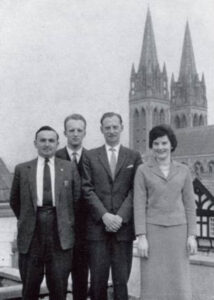
He entered the Bank in the Craven District in 1941 and has served at Keighley, Crosshills, Ilkley and at Liverpool City Office. He served during the War from 1943 to 1947 and again in 1956 as a Forces Reservist during the Suez Crisis. Mr. J. House is the junior clerk and the ladies are represented by Miss D. Allen. Both are local products, Mr. House from Truro itself and Miss Allen from St. Austell. Both have been with the branch from the opening day.
After completing our visit to the branch we were privileged to be invited to lunch at the home of Mr. and Mrs. Parkinson, about two miles outside the city. They had to wait some months to find what they wanted but it was certainly worth it. They have the best of both worlds here, a most attractive house and garden, quite secluded, with a view of fields and trees. Exactly one minute away is the main road and a bus stop and you come from one to the other so suddenly as to make you wonder whether you have been dreaming.
After lunch at which we were entertained by an attractive and personable young lady of eight, we went for a drive round Mr. Parkinson’s ‘territory’, to St. Agnes and Falmouth and to some of the glorious little coves in which the coast abounds.
The highlight of the afternoon, however, was a visit to a customer, Mr. J. A. Harman, who has created a holiday village out of a wooded hillside in a little less than ten years. Using the materials on the site, he has built, with the labour of his own hands, assisted by his brother and two other helpers, a number of stone chalets. Now he is building wooden ones.
Each is equipped with an all-electric kitchen, electric light, hot and cold water, modern flush sanitation, bunks with Dunlopillo or interior spring mattresses, and all are fully furnished. The chalets are six, four, three and two-berth. A lovely secluded bathing beach is five minutes away and the place is an ideal touring centre for those who want to vary seclusion with sightseeing. It is called Little Orchard Village and it is close to St. Agnes. The grounds are beautifully laid out and work is going on with the concreting of paths and the building of new chalets until about 45 have been completed. In a different kind of way it reminded us of Port Meirion, but as a monument to what the industry, enterprise and vision of a handful of men can achieve out of almost nothing in a few years it provided a most encouraging and satisfying answer to anyone who thinks that the qualities which made our country what it is are no longer present. With dinner at the Red Lion in the evening a very full, instructive, inspiring and happy day ended our visit to Truro.


